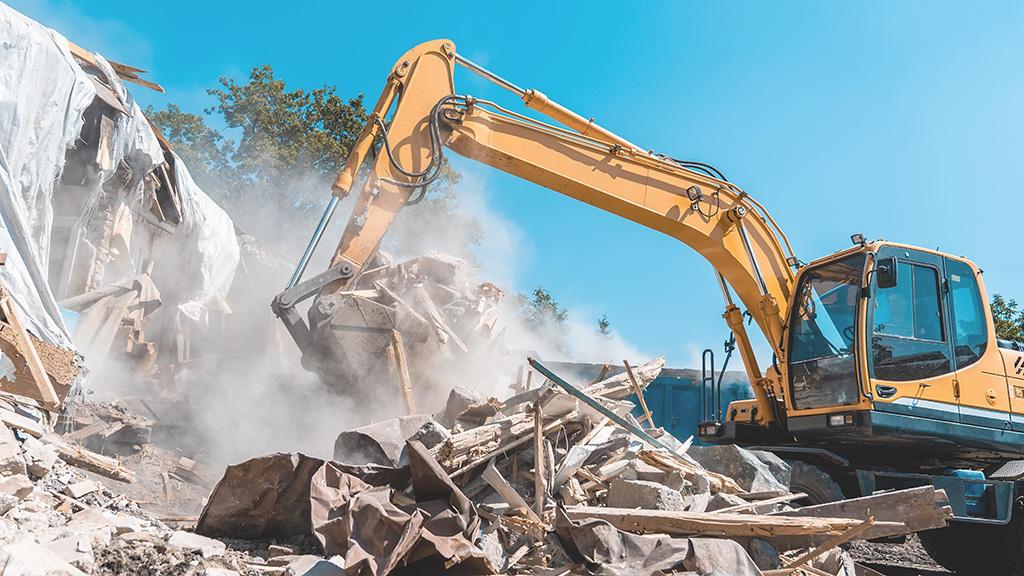Construction, renovation and demolition (CRD) activities represent one of the largest waste streams in Manitoba. The sector generates up to 30 per cent of the total waste that goes to landfill sites in the province.
A new task force is hoping to change that by exploring ways Manitoba can move toward greater recycling of CRD waste materials, diverting them from landfills and producing new products for use in a variety of ways.
The task force will examine what’s working well and consider options from other Canadian jurisdictions surrounding the reuse and recycling of construction materials.
Members will also look for best practices to develop recommendations and engage with stakeholders to understand the issue from multiple perspectives.
Chris Lorenc, president and CEO of the Manitoba Heavy Construction Association, is co-chair of the task force with Colleen Sklar, executive director of the Winnipeg Metropolitan Region.
“Our industry is looking forward to sharing its experiences and innovations, including in the recycling of concrete aggregates, asphalt, shingles, water used in the production of aggregates, steel rebar and the likes,” Lorenc said. “The models we’ve read about in use in other countries, provinces and municipalities can be used to guide our best efforts here in Manitoba.
“The construction industry has been recycling select materials from road or other projects, but there are numerous materials that could be recovered and reused from broader construction activities to promote resource management and environmental stewardship.”
The task force will include participation from the City of Winnipeg, Association of Manitoba Municipalities, Winnipeg Construction Association and the Manitoba Home Builders’ Association. It has been asked to submit a report with recommendations to the Manitoba government this fall.
The group was launched because a waste diversion and recycling framework review completed in 2021 identified CRD activities create one of the largest waste streams in Manitoba.
Manitoba has one of the lowest rates of CRD material recycling.
The construction and demolition sector, in particular, is one of the largest resource consumers and waste producers in society, using up to 40 per cent of the total raw materials extracted globally and generating about 35 per cent of the world’s waste.
A 2015 study commissioned for Environment Canada estimated only 16 per cent of CRD waste was reused or recycled, while the remaining 84 per cent was disposed, mostly in landfills. But some jurisdictions have moved to adopt policies and practices for reclaiming and reusing construction and demolition waste.
A provincial spokesperson said in a statement CRD waste represents four million tonnes, or 12 per cent, of the solid waste stream in Canada.
“Reducing this waste stream extends the life of landfills, preserves finite resources, boosts the circular economy and reduces greenhouse emissions,” the spokesperson said.
According to the province, reduce, reuse, recycle and recover are key elements that underpin the transition towards a circular economy, where construction and other post-consumer waste materials are integrated back into use and production cycles.
The process leads to better preservation of natural resources, a reduction in GHG emissions, and the generation of new economic opportunities for Manitoba, the spokesperson stated.
The most prevalent types of materials that can be recycled are wood, which includes clean, engineered, treated or painted wood, asphalt roofing and drywall. Other materials include metals, plastics, concrete, asphalt paving, bricks, glass, cardboard, and certain rock, gravel and aggregates.
The ability to recycle materials varies by region and depends on a number of factors such as processing capacity, end use and market value.
The province expects a greater focus on recycling CRD waste materials will create new jobs around recycling.
“Waste diversion and recycling activities can create new green jobs,” the spokesperson said. “Exploring opportunities to increase the circular economy in Manitoba, including the creation of new green jobs, is one of the objectives of the CRD task force.”
A final report with recommendations will be provided to Environment and Climate Minister Kevin Klein once the task force completes its work.
“Construction, renovation and demolition waste is a major contributor to our landfills, so by diverting these materials through reuse and recycling, we help address the problem while protecting our environment,” said Klein, noting diverting materials from the waste stream is a good deal for everybody.
The benefits of greater recycling of CRD waste aligns with the Winnipeg Metropolitan Region’s draft Plan 20-50, which will establish a regional approach supporting waste minimization, diversion and recycling.
“Building resiliency in our region is a key objective in Plan 20-50,” said co-chair Sklar. “This starts with improved data sharing and good working relationships across all levels of government, which ensure sound decision-making and an environment of trust.”











Recent Comments